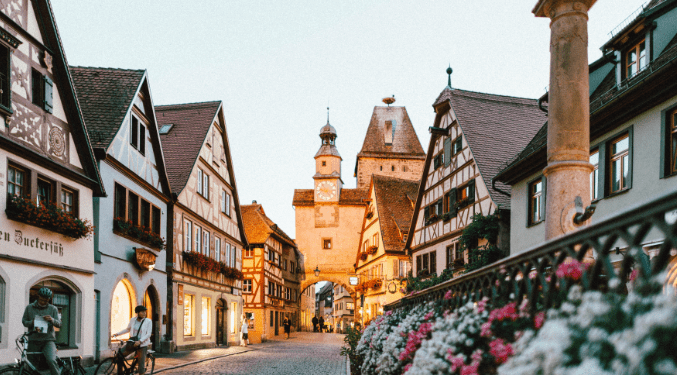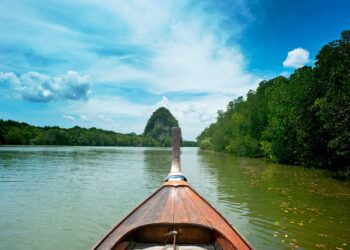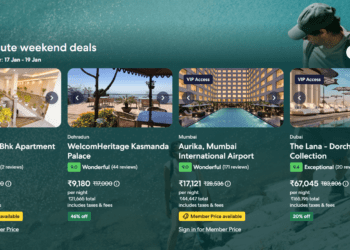
Germany is a vast and beautiful country with plenty to see and do, yet so many people stick to the same old tourist traps. If you’re looking to explore beyond the well-trodden path, here are 8 places in Germany that you didn’t know about – from fairy-tale castles to stunning mountains, there’s something for everyone.
Hamburg
Hamburg is a port city in northern Germany and is one of the country’s 16 states. It is the second-largest city in Germany and the eighth-largest city in the European Union. With a population of over 1.8 million, Hamburg is home to more than 5,000 restaurants and over 300 hotels. The city is also known for its nightlife, with many bars, nightclubs, and music venues.
Hamburg has a long history dating back to the first century CE. It was first mentioned in a document in 965 CE as Hammaburg, and later became a free imperial city of the Holy Roman Empire. In 1815, it was made a state of the German Confederation. Hamburg later joined the North German Confederation in 1867 and became part of the German Empire in 1871. Following World War I, Hamburg was made a state of the Weimar Republic.
During World War II, Hamburg was heavily bombed by Allied forces due to its strategic importance as a port city and its connections to the Nazi regime. Over 50% of the city’s buildings were destroyed, and over 1 million people were displaced. After the war, Hamburg was rebuilt with help from the Marshall Plan.
Today, Hamburg is an important center for trade and finance in Europe. It is also home to many cultural institutions, including over 50 museums and 100 art galleries. The city hosts numerous festivals throughout the year, including the annualHanseaticDays
Dresden
Dresden is a city in Germany that is often overshadowed by its more popular counterparts, Berlin and Munich. However, Dresden has a lot to offer visitors, from its stunning architecture to its rich history. Here are some of the best things to see and do in Dresden:
-Wander through the Old Town: The Old Town of Dresden is a UNESCO World Heritage Site, and it’s easy to see why. The beautifully preserved buildings and streets are a feast for the eyes, and there’s plenty to explore, from the Frauenkirche church to the Semperoper opera house.
-Visit the Green Vault: The Green Vault is one of the oldest museums in Europe, and it houses an incredible collection of precious jewels and other objects. Even if you’re not normally interested in museums, it’s well worth a visit for the sheer opulence on display.
-Explore the New Town: In contrast to the Old Town, the New Town is much more modern. It’s home to many of Dresden’s best shopping and dining options, as well as attractions like the Zwinger Palace.
-Take a day trip to Meissen: Just outside of Dresden is the town of Meissen, famous for its porcelain production. You can tour the factories where this delicate pottery is made, or browse the shops for some lovely souvenirs.
Berlin

Berlin, the capital of Germany, is a major destination for tourists from all over the world. The city has a lot to offer, from its rich history to its vibrant nightlife. However, there are also some lesser-known places in Berlin that are worth checking out.
1. The Berlin Wall: This iconic structure was once a symbol of the division between East and West Germany. Today, it is a popular spot for tourists to take photos and learn about the country’s history.
2. Checkpoint Charlie: This was one of the most famous checkpoints during the Cold War. It is now a museum that teaches visitors about the history of the Cold War.
3. The Brandenburg Gate: This is one of the most recognizable landmarks in Berlin. It was built in the 18th century and has been a symbol of peace and unity since then.
4. The Reichstag Building: This building houses the German parliament and is one of the most important political buildings in Germany. Visitors can go on guided tours of the building or simply admire its architecture from outside.
5. Museum Island: This is a group of five museums that are located on an island in the River Spree. They include the Pergamon Museum, which houses ancient artifacts from around the world; the Bode Museum, which has a collection of art and sculptures; and the Alte Nationalgalerie, which features 19th-century paintings and sculptures.
Nuremberg
Nuremberg is a city in Bavaria, Germany. It is located on the Pegnitz river and the Main-Danube Canal. Nuremberg is famous for its gingerbread and Lebkuchen (a type of gingerbread). The city also has a large Christmas market which is held every year in December.
Nuremberg was first mentioned in a document in 1040 AD. The city was founded by the Bavarian Duke Henry the Lion in 1218. Nuremberg became an imperial city of the Holy Roman Empire in 1219. The city was a Free Imperial City from 1296 to 1806. From 1356 to 1424, Nuremberg was the largest city in the Empire.
During the 15th and 16th centuries, Nuremberg was one of the most important cities in Europe. It was the unofficial capital of the Holy Roman Empire and home to many emperors and kings. The Diet of Nuremberg (an assembly of German princes) met at least 23 times between 1424 and 1531.
The city’s golden age came to an end with the Thirty Years’ War (1618-1648). The war destroyed much of Germany and killed millions of people. After the war, Nuremberg lost its importance as an imperial city. In 1806, it became part of Bavaria after Napoleon dissolved the Holy Roman Empire.
During World War II, Nuremberg was heavily bombed by Allied
Heidelberg
Heidelberg is a beautiful city located in southwest Germany. It is well known for its picturesque setting along the River Neckar and for its imposing red sandstone castle. However, there is much more to Heidelberg than meets the eye.
Here are some lesser-known facts about this fascinating city:
1. Heidelberg has been home to some of Germany’s most important thinkers and writers, including Friedrich Nietzsche, Karl Marx and Hannah Arendt.
2. The city was badly damaged during the Thirty Years’ War but was rebuilt in the 18th century in a style that combines Baroque and Renaissance elements.
3. Heidelberg University, founded in 1386, is one of Germany’s oldest and most prestigious universities. Notable alumni include Nobel Prize winners Max Planck and Otto Hahn.
4. The Heidelberg Tunnels, a series of tunnels built under the castle hill, were used as an air raid shelter during World War II. Today they are open to the public and offer stunning views of the city from below ground level.
5. Every summer, the Heidelberger Schlossbeleuchtung (Heidelberg Castle Illumination) takes place – over 2 million lights illuminate the castle for a magical experience unlike any other!
Munich
1. Munich
Munich is the third largest city in Germany and the capital of Bavaria. The city is home to many historical landmarks such as the Frauenkirche, the Hofbräuhaus, and Marienplatz. Munich is also a major cultural center, with museums such as the Alte Pinakothek and the Bayerisches Nationalmuseum. In addition, the city has a lively nightlife scene and is home to many festivals throughout the year, including Oktoberfest.
Stuttgart

If you’re looking for a city with a mix of old and new, Stuttgart is the perfect place to visit. The city has a long history dating back to the 11th century, but it’s also home to some of Germany’s most cutting-edge architecture and design.
There’s plenty to see and do in Stuttgart, from exploring the historic Old Town to checking out the latest exhibitions at the Staatsgalerie museum. And when you need a break from sightseeing, you can relax in one of the city’s many parks or enjoy a meal or drink in one of its many cafes and restaurants.
Dusseldorf
Dusseldorf is a city located in the west of Germany on the River Rhine. The city is the capital of the German state of North Rhine-Westphalia. Dusseldorf is known for its fashion and trade fairs. The city is also home to many art galleries, museums, and theaters.























